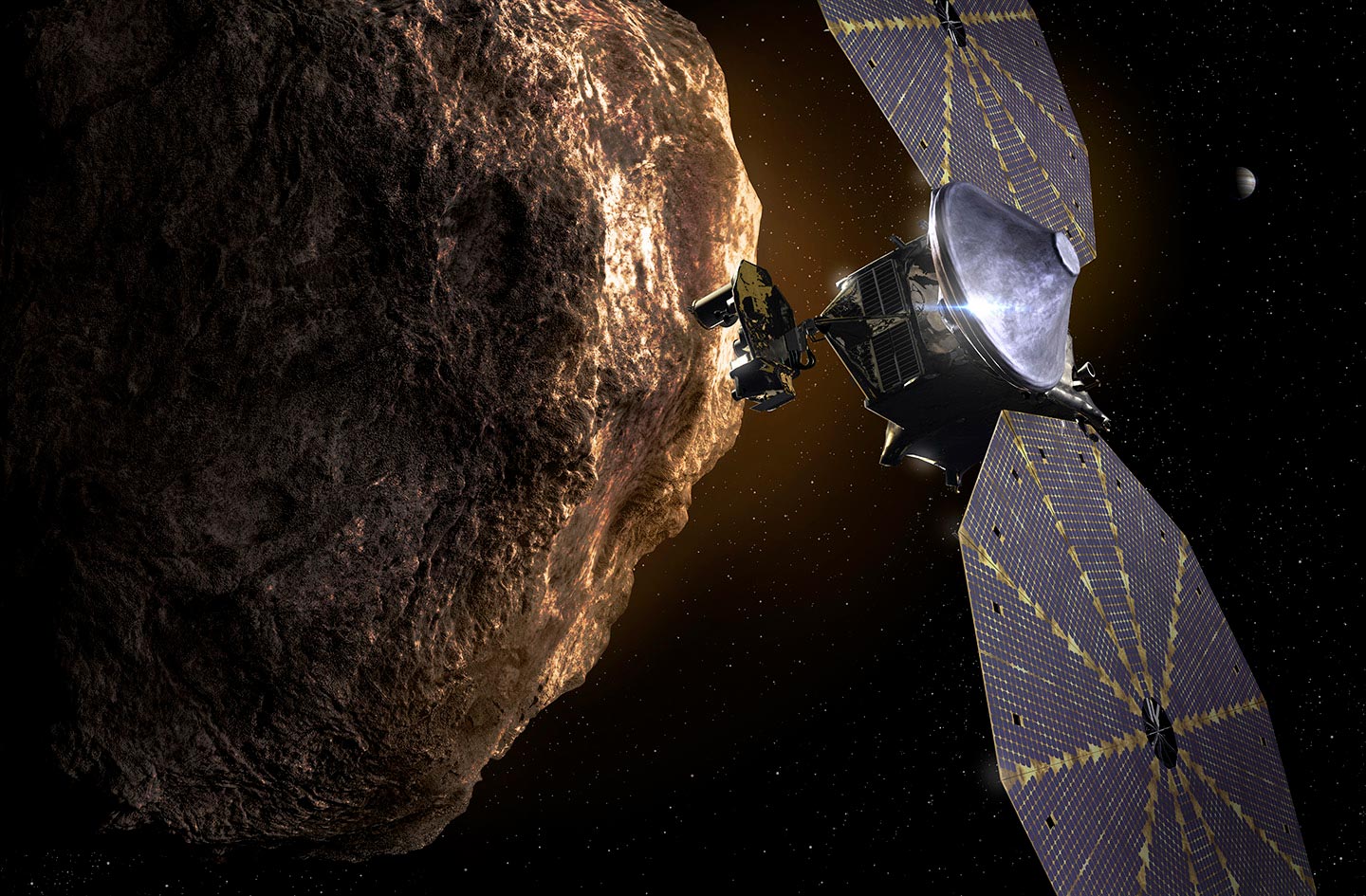Jupiter Trojan asteroids, which orbit the Sun at the same distance as Jupiter. Originally, Lucy was not scheduled to get a close-up view of any asteroids until 2025, when it will fly by the main belt asteroid (52246) Donaldjohanson. However, the Lucy team identified a small, as-yet unnamed asteroid in the inner main belt, designated (152830) 1999 VD57, as a potential new and useful target for the Lucy spacecraft.
“There are millions of asteroids in the main asteroid belt,” said Raphael Marschall, Lucy collaborator at the Nice Observatory in France, who identified asteroid 1999 VD57 as an object of special interest for Lucy. “I selected 500,000 asteroids with well-defined orbits to see if Lucy might be traveling close enough to get a good look at any of them, even from a distance. This asteroid really stood out. Lucy’s trajectory as originally designed will take it within 40,000 miles of the asteroid, at least three times closer than the next closest asteroid.”

As the NASA Lucy spacecraft travels through the inner edge of the main asteroid belt in the Fall of 2023, the spacecraft will fly by the small, as-of-yet unnamed, asteroid (152830) 1999 VD57. This graphic shows a top-down view of the Solar System indicating the spacecraft’s trajectory shortly before the November 1 encounter. Credit: NASA’s Goddard Space Flight Center
The Lucy team realized that, by adding a small maneuver, the spacecraft would be able to get an even closer look at this asteroid. So, on January 24, the team officially added it to Lucy’s tour as an engineering test of the spacecraft’s pioneering terminal tracking system. This new system solves a long-standing problem for flyby missions: during a spacecraft’s approach to an asteroid, it is quite difficult to determine exactly how far the spacecraft is from the asteroid, and exactly which way to point the cameras.
“In the past, most flyby missions have accounted for this uncertainty by taking a lot of images of the region where the asteroid might be, meaning low efficiency and lots of images of blank space,” said Hal Levison, Lucy principal investigator from the Southwest Research Institute Boulder, Colorado office. “Lucy will be the first flyby mission to employ this innovative and complex system to automatically track the asteroid during the encounter. This novel system will allow the team to take many more images of the target.”
It turns out that 1999 VD57 provides an excellent opportunity to validate this never-before-flown procedure. The geometry of this encounter—particularly the angle that the spacecraft approaches the asteroid relative to the Sun—is very similar to the mission’s planned Trojan asteroid encounters. This allows the team to carry out a dress rehearsal under similar conditions well in advance of the spacecraft’s main scientific targets.
This asteroid was not identified as a target earlier because it is extremely small. In fact, 1999 VD57, estimated to be a mere 0.4 miles (700 m) in size, will be the smallest main belt asteroid ever visited by a spacecraft. It is much more similar in size to the near-Earth asteroids visited by recent NASA missions OSIRIS-REx and DART than to previously visited main belt asteroids.
The Lucy team will carry out a series of maneuvers starting in early May 2023 to place the spacecraft on a trajectory that will pass approximately 280 miles (450 km) from this small asteroid.
Lucy’s principal investigator is based out of the Boulder, Colorado branch of Southwest Research Institute, headquartered in San Antonio, Texas. NASA’s Goddard Space Flight Center in Greenbelt, Maryland, provides overall mission management, systems engineering, and safety and mission assurance. Lockheed Martin Space in Littleton, Colorado, built the spacecraft. Lucy is the 13th mission in NASA’s Discovery Program. NASA’s Marshall Space Flight Center in Huntsville, Alabama, manages the Discovery Program for the Science Mission Directorate at NASA Headquarters in Washington.

“경순은 통찰력 있고 사악한 사상가로, 다양한 음악 장르에 깊은 지식을 가지고 있습니다. 힙스터 문화와 자연스럽게 어우러지는 그의 스타일은 독특합니다. 그는 베이컨을 좋아하며, 인터넷 세계에서도 활발한 활동을 보여줍니다. 그의 내성적인 성격은 그의 글에서도 잘 드러납니다.”
